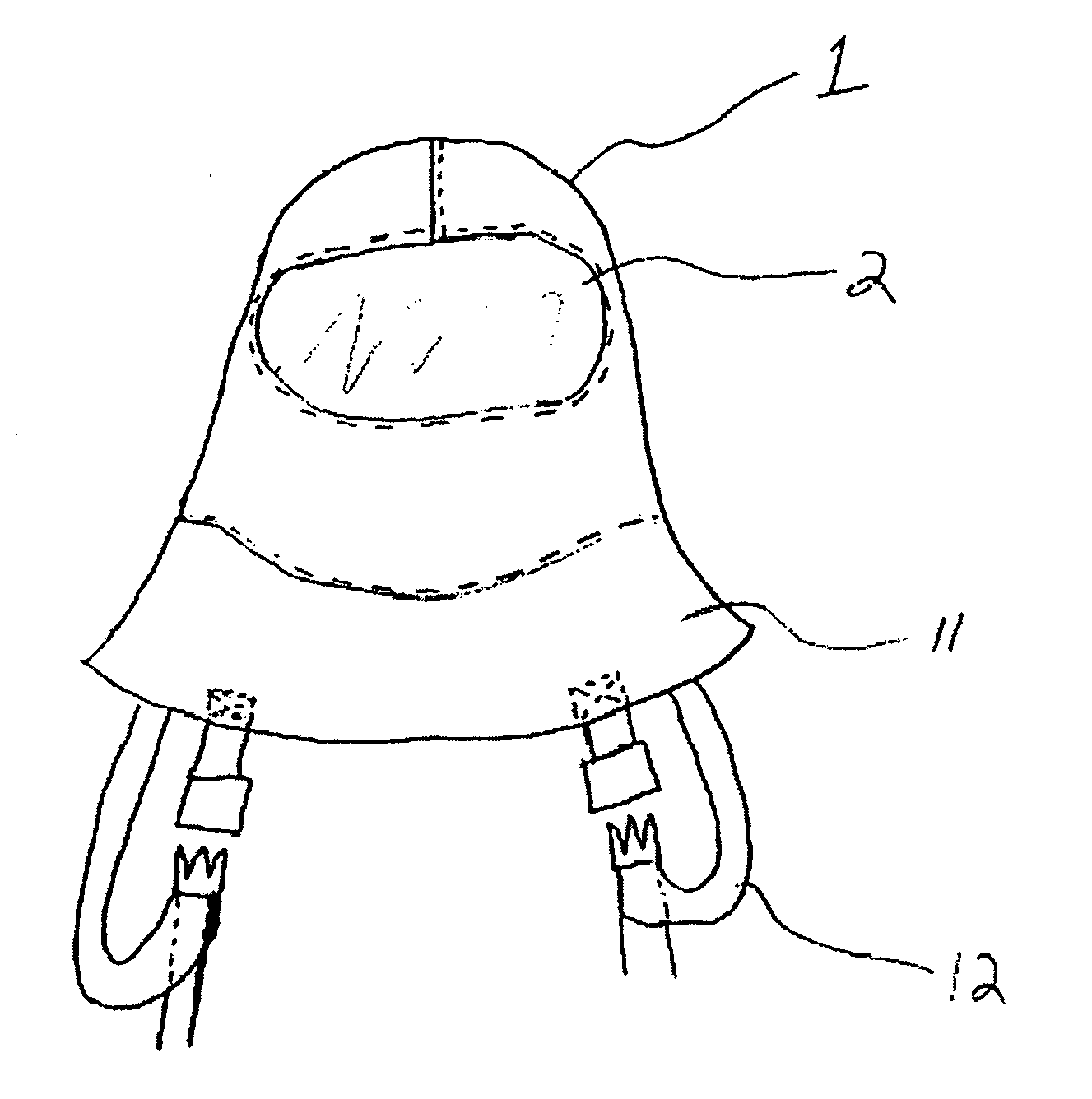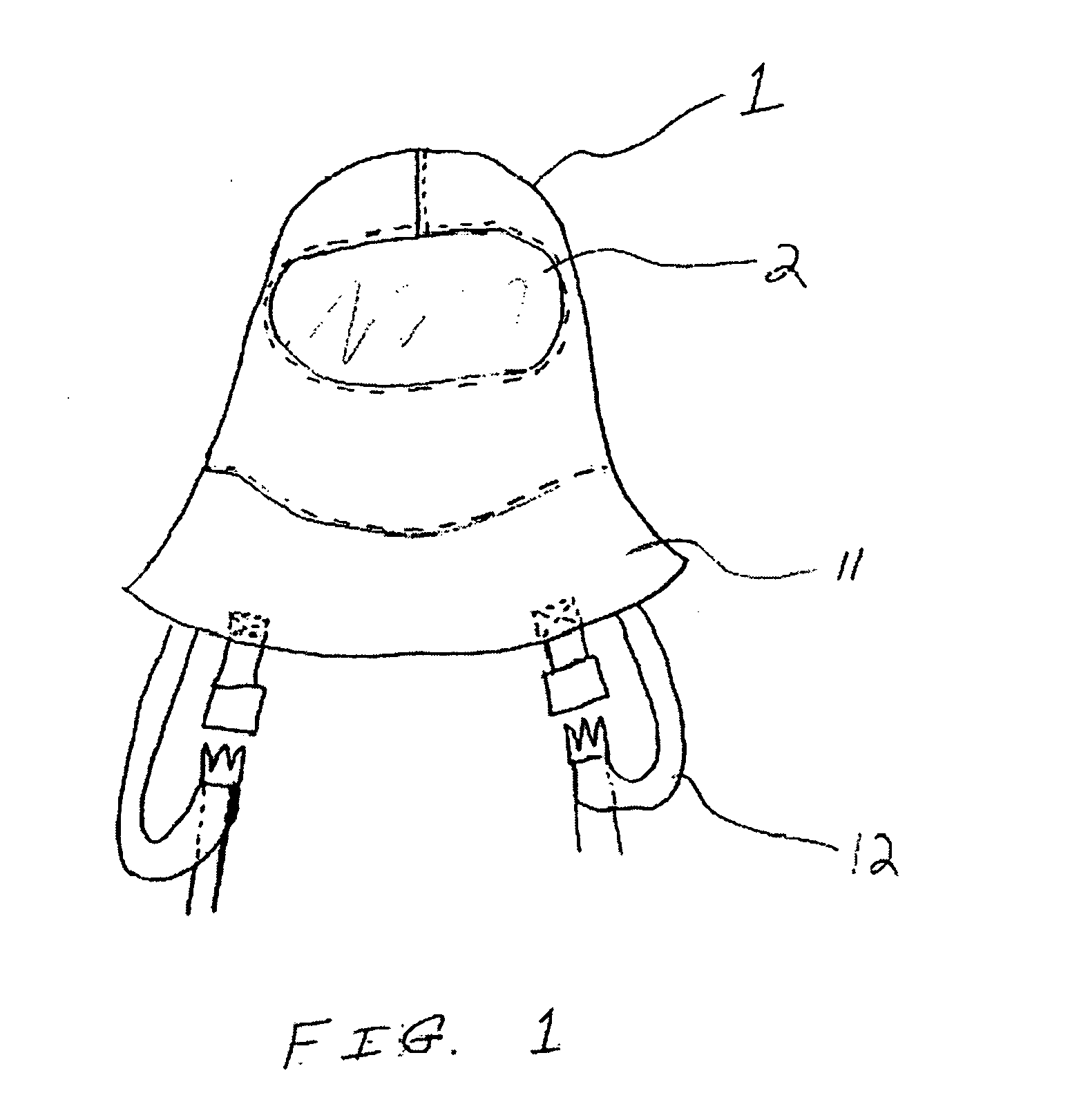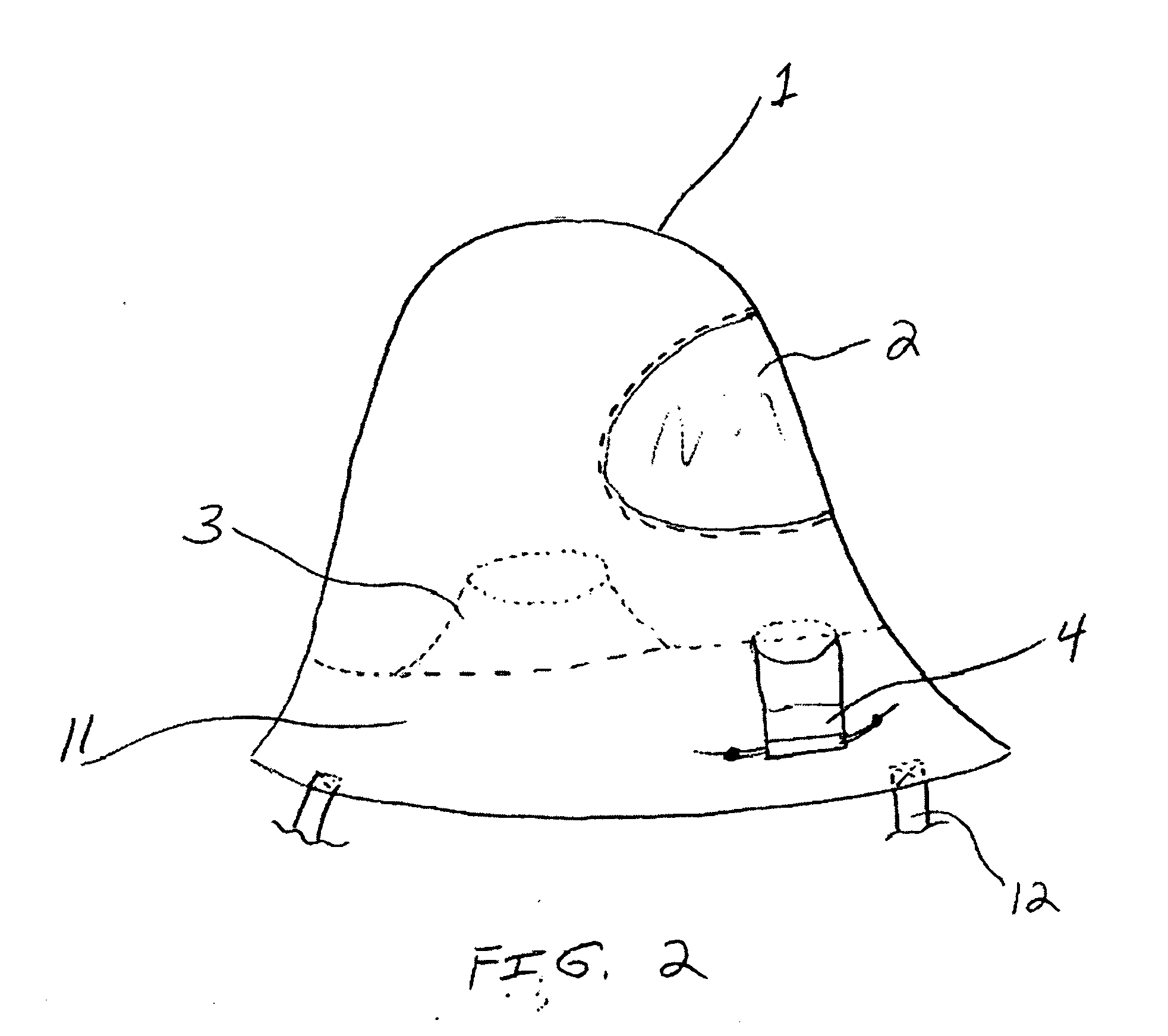Chemical and biological protective hood assembly
a technology of protective hoods and hoods, applied in protective garments, headwear caps, hats, etc., can solve the problems of restricting user movement and visibility, wearing completely decontaminated, and non-encapsulating designs that offer complete skin protection
- Summary
- Abstract
- Description
- Claims
- Application Information
AI Technical Summary
Problems solved by technology
Method used
Image
Examples
example
[0053] A hood was constructed of three-layer chemical / biological protective fabrics, a chemical / biological protective seam tape, a latex rubber was used as neck sealing means, an optically clear polyvinyl chloride (PVC) film was used as the visor, a 0.045″×1″ open-cell foam rubber tape was used as the air line sealing means, a nylon cording and strapping with locking fasteners was used as the securing means for air line sealing means. The three-layer chemical / biological protective fabrics consisted of a fabric construction from W. L. Gore & Associates (part number ECAT 614001B). Chemical / biological protective seam tape from W. L. Gore & Associates (part number 6HSAJ025BLKBX) was used to seal sewn-together seams. Latex rubber was affixed at the head passthrough as the neck sealing means (part number 30003 / 1725AS102-4, Formco, Inc). The optically clear PVC visor had a nominal thickness of 0.080 inches was supplied by McMaster Carr (part number 87875K37).
[0054] Once the fabric, PVC fi...
PUM
 Login to View More
Login to View More Abstract
Description
Claims
Application Information
 Login to View More
Login to View More - R&D
- Intellectual Property
- Life Sciences
- Materials
- Tech Scout
- Unparalleled Data Quality
- Higher Quality Content
- 60% Fewer Hallucinations
Browse by: Latest US Patents, China's latest patents, Technical Efficacy Thesaurus, Application Domain, Technology Topic, Popular Technical Reports.
© 2025 PatSnap. All rights reserved.Legal|Privacy policy|Modern Slavery Act Transparency Statement|Sitemap|About US| Contact US: help@patsnap.com



